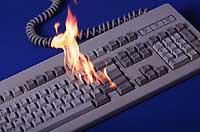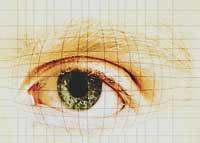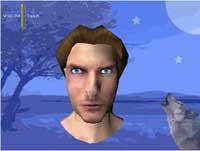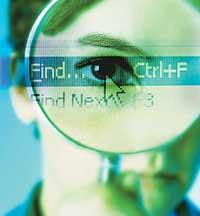Ambient Intelligence to Environmental Intelligence
2005/10/04 Saiz Elizondo, Rafa - Itsas Enara Ornitologia Elkartearen lehendakaria
But the signals of the real world, such as sound, image or lyrics, are not by themselves digital, and for the new information to serve these systems, it is necessary to digitize the inputs — inputs — using devices specifically designed for it: scanner, digital camera, keyboard, sound card, etc. Not at home, but also in industry, medicine and many other fields, many other types of devices have been used, such as sensors used to measure parameters such as temperature, pressure, humidity, etc. The reverse is also done: the signals we see and hear are analog and the speakers or screens, which receive digital information through the cables, emit analog signals to the eyes.

So far the PC has been the core and base of this system. We have connected several input/output devices around your CPU (Central Process Unit) and that is why we have called peripherals. But from now on all this begins to change: the intelligent environment has arrived, the new advance that will change our daily life.
Technology around and in secret
We are used to considering computers as a limited and well-identified physical object. We know where it is: on the table or in the car. We also know what accessories it has and where they are. Communication between them is mainly by cable. We will soon forget him more. In our environment are hidden several devices that collect information: cameras, microphones, temperature or pressure sensors. They will be connected to each other by wireless systems and will communicate our actions, desires, humor and desires to a powerful CPU.
The attitude we take when sitting on a sofa, for example, depends on our mood or our fatigue. The pressure sensors that the furniture has are discovering the attitude we have taken and 'will know' how we have come home. It will help you with the information sent to you by the cameras that are in the room after scanning our face: you will see that we really are ourselves and you will know if we are sad, cheerful, tired or asleep according to the attitude of the eyes, eyebrows and mouth. With this information, a sweet voice may propose us to listen to this kind of music or offer us a coffee, as we would like.
All this seems somewhat distant, but do not forget that this type of technologies are already used in some applications. If to access installations such as the pupil, the wrinkles of the hand or face are cameras and scanners that examine us as they are, they decide whether we really are and let us advance. Some games that use virtual reality also use sensors that measure the pressure of the hands, placed in digital gloves.

The objective of the intelligent environment is that, through the integration of technology (all of them), life becomes more comfortable without noticing, to the extent possible, the physical footprint of technology. The systems will be at home, in the car, in the clothes, in the workshop, in the office, in the bar, in the bank, in the street... but we will not see them. This idea is called ubiquitous computing. To this we should add the possibilities offered by the Internet: consumption, information searches, contacts... In addition, the user should not make any additional effort to communicate with devices, nor learn to use computers or anything. Neither does he learn a language different from his own.
With all naturalness, in Basque language
Natural communication between human beings is speech and, in order for the environment to be truly intelligent, you must understand to each of us the orders we give you or the questions we ask you, and, in addition, you will have to give us answers in our language. For this purpose, the development of technology requires a different work to the development of others, since each language provides its own demands.
To develop a technology capable of deciding whether the face of an English, a Polynesia or a Kikuyu is scanned or not, in spite of his great work, just one time. However, each language has its own vocabulary, sounds, melody and syntax, and each one needs to develop its particular software. It is little wonder that technologies for speaking powerful languages in English, Japanese, Spanish or Western Europe are more advanced than others. Basque has also begun to research and create technology for him, but the task is enormous.
AnHitz is a project created by four Basque agents: Elhuyar Foundation, University of the Basque Country, VicomTech and Robotiker. In some areas will also intervene the company Eleka Ingeniaritza Lingustikoa. The objective of this project is that vascospeakers do not have to give up anything to enjoy the advantages of smart environments and be able to speak in Basque without technological limitations.
AnHitz has four large areas of work, all related to smart environments, but defined for Basque and Basque. Interfaces with users are the first to perceive them. The interfaces are devices located between the user and the machine. Our mission is to 'listen' our words, convert the analog sound into a digital signal and create a written transcription of the recording, in terms of inputs, and perform the transformations of natural words in the speakers, that is, synthesize the speech, in relation to outputs, from a written text.

Systems should take into account both intonation, articulation, feelings—fear, fear, surprise, disgust, shame, timidity...—and the ways of expressing special meanings—irony, cynicism...—so that the written message they generate is more than an empty text: meaning must be fixed as best as possible, without ambiguity. Likewise, the messages sent to us by the machines should be adapted to the situation, not to this type of standard messages, and should be intoned according to the circumstances.
Read more
The second field of work is knowledge management. It is useless that we can give orders in Basque, if the answers, even if they are received in Basque, are null. At present there is a great digitized information, of which most are in conditions of consultation and search, not always in the hands of anyone, but always in the hands of its owner. Written information is the one that has the most volume in that volume, and since this information is WRITTEN, there will necessarily be a language.
Today you can do a lot with written information. For example, large files can be automatically classified according to the content of the documents. Or compare documents and, although written in different words, systems realize that they have a similar content. Search engines, in addition to searching for specific text strings, know the meaning of these text strings and can perform broader searches depending on this. We will ask for 'ball' and the system will also look for 'ball' and 'ball', if we want. For this purpose, technology must take into account the language in which the document has been written. Once again, it is necessary to carry out research and linguistic developments. We must take into account the variants of each word (very important in the Basque language, since it has a great decline), but also take into account the influence of synonym and polysemy and, for example, in which field of knowledge each word is used. The task has been extended to the field of semantic.

To facilitate the work to both one and the other, it is essential to work in depth the third field: linguistic tools and resources. The above mentioned needs require the existence of previous basic resources. Linguistic information should be well organized and prepared to be used by applications. How will the seekers know that 'ball' and 'ball' are synonymous? Or how will they know that 'segapoto' has three meanings (for the moment)? Or is it an ironic saying ('joan ta harrapa eza')? Or 'I said', 'esan det', 'esan dot' and 'erran dut' are variants of the same phrase? The answer are large, organized and logically labeled data stores, and, of course, computer.
Finally, as the scope of application of the previous one, machine translation within AnHitz will also be addressed. In this sense, several agents are already working on the development of an engine between the four official languages of the State. This same engine can be used only, as do some current applications: we introduce as input a text written in a language and the system returns an equivalence in another language. However, multilingual consultation applications could include this engine. For example, we do an oral consultation in Basque, the systems we will look for in Basque in the documents in Basque, but at the same time we translate our consultation into several languages and perform a search in each of them. The answers will be translated into Basque and finally will be offered both orally and in writing.
All this is not something that concerns us tomorrow, but before what we think. To do this, the first necessary steps have been taken and there are already tools and resources that are in different ways. But there is still much to do. That is our challenge.




